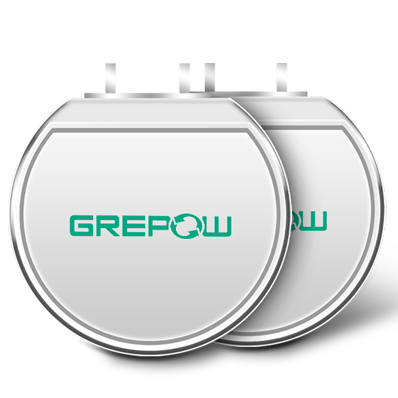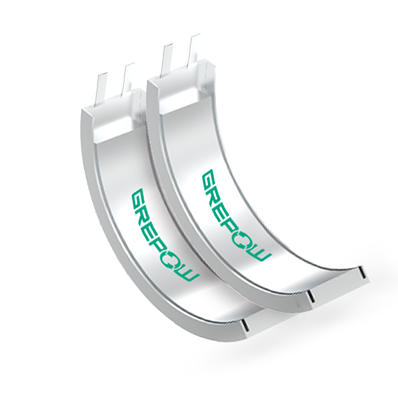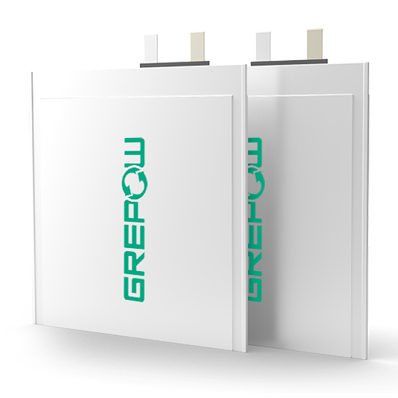Flexible Paper Battery Offers Future Power
Flexible paper batteries could meet the energy demands of the next generation of gadgets, says a team of researchers. They have produced a sample slightly larger than a postage stamp that can store enough energy to illuminate a small light bulb. But the ambition is to produce reams of paper that could one day power a car.
Professor Robert Linhardt, of the Rensselaer Polytechnic Institute, said the paper battery was a glimpse into the future of power storage.
The team behind the versatile paper, which stores energy like a conventional battery, says it can also double as a capacitor capable of releasing sudden energy bursts for high-power applications.
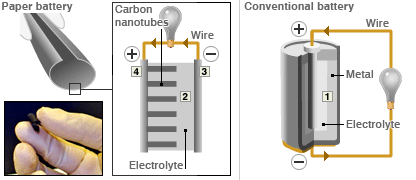
Graphic: How a paper battery works
Electricity is the flow of electrical power or electrons
1. Batteries produce electrons through a chemical reaction between electrolyte and metal in the traditional battery.
2. Chemical reaction in the paper battery is between electrolyte and carbon nanotubes.
3. Electrons collect on the negative terminal of the battery and flow along a connected wire to the positive terminal
4. Electrons must flow from the negative to the positive terminal for the chemical reaction to continue.
While a conventional battery contains a number of separate components, the paper battery integrates all of the battery components in a single structure, making it more energy efficient.
Integrated devices
The research appears in the Proceedings of the National Academy of Sciences (PNAS).
"Think of all the disadvantages of an old TV set with tubes," said Professor Linhardt, from the New York-based institute, who co-authored a report into the technology.
"The warm up time, power loss, component malfunction; you don't get those problems with integrated devices. When you transfer power from one component to another you lose energy. But you lose less energy in an integrated device."
The battery contains carbon nanotubes, each about one millionth of a centimetre thick, which act as an electrode. The nanotubes are embedded in a sheet of paper soaked in ionic liquid electrolytes, which conduct the electricity.
The flexible battery can function even if it is rolled up, folded or cut.
Although the power output is currently modest, Professor Linhardt said that increasing the output should be easy.
"If we stack 500 sheets together in a ream, that's 500 times the voltage. If we rip the paper in half we cut power by 50%. So we can control the power and voltage issue." Because the battery consists mainly of paper and carbon, it could be used to power pacemakers within the body where conventional batteries pose a toxic threat.
"I wouldn't want the ionic liquid electrolytes in my body, but it works without them," said Professor Linhardt. "You can implant a piece of paper in the body and blood would serve as an electrolyte." But Professor Daniel Sperling at University of California, Davis, an expert on alternative power sources for transport, is unconvinced. "Batteries and capacitors are being steadily improved, but electricity storage is much more difficult and expensive than liquid fuels and probably will be so forever," he said.
The world is not going to change as a result of this new invention any time soon. Professor Linhardt admitted that the new battery is still some way from the commercial market." The devices we're making are only a few inches across. We would have to scale up to sheets of newspaper size to make it commercially viable," he said. But at that scale, the voltage could be large enough to power a car, he said.
However, carbon nanotubes are very expensive, and batteries large enough to power a car are unlikely to be cost effective. "I'm a strong enthusiast of electric vehicles, but it is going to take time to bring the costs down," said Professor Sperling.
But Professor Linhardt said integrated devices, like the paper battery, were the direction the world was moving. "They are ultimately easier to manufacture, more environmentally friendly and usable in a wide range of devices," he said.
The ambition is to produce the paper battery using a newspaper-type roller printer.
Now, Grepow custom batteries is designed to fit into any and all spaces in a product. The thinses can be 0.4mm with higher capacity. In order to provide the best efficiency, Grepow batteries can be made to fit into even unused spaces. With our proprietary formula and high discharge-rate technology, you can maximize the run time and use of your product.
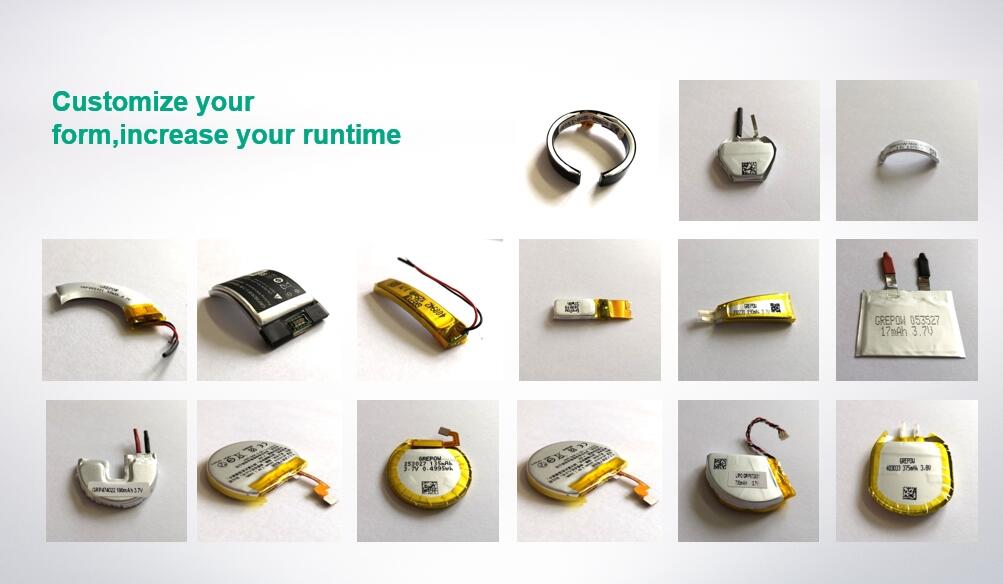
More Relate Articals:
A Review of Flexible Battery Manufacturers
Highly Flexible High-energy Textile Lithium Battery for Wearable Electronics
Related Articles
-
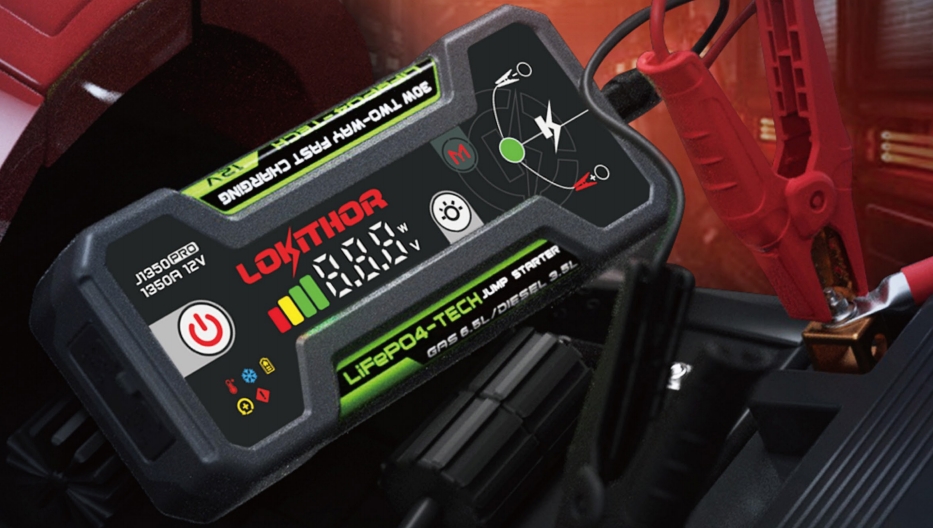
The Ultimate Guide to Grepow Jump Starter
2025-03-27 -
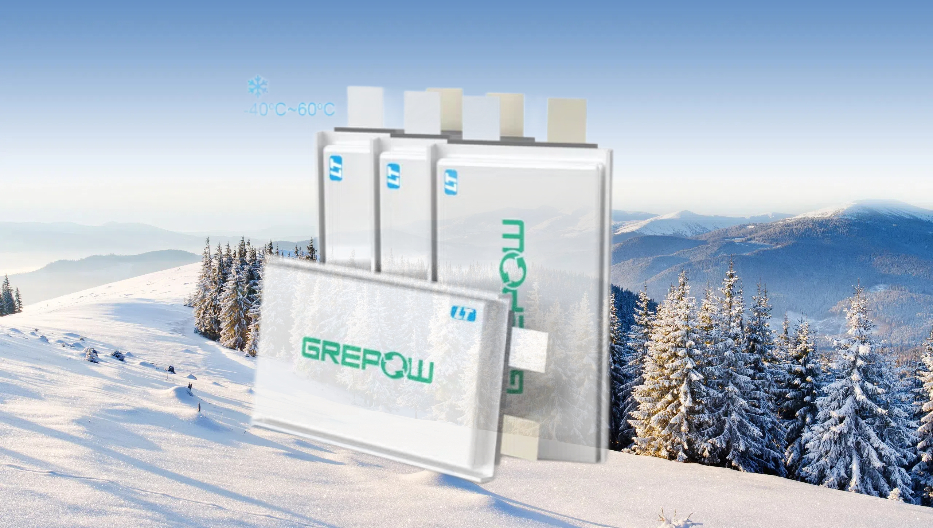
How to Choose Lithium Batteries for Cold Weather?
2024-09-19 -
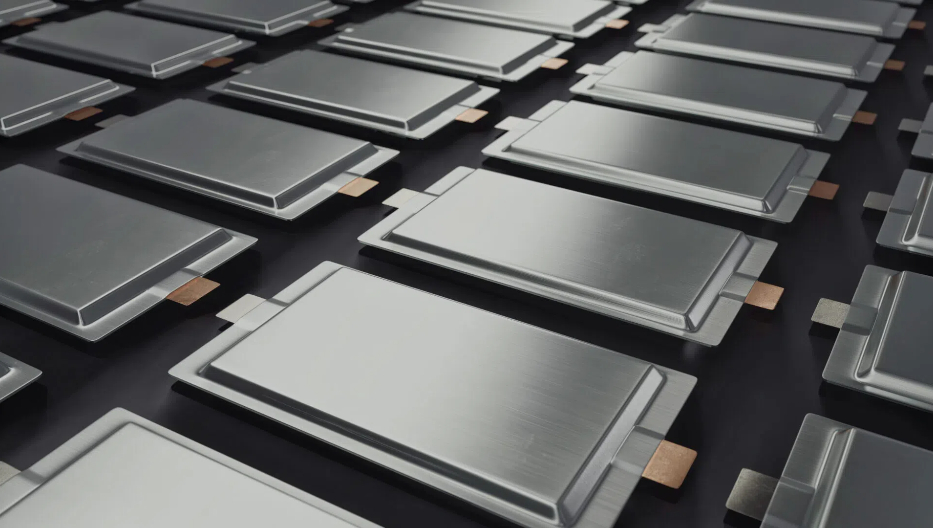
Next-Generation eVTOL Battery Technology
2024-08-22
















































